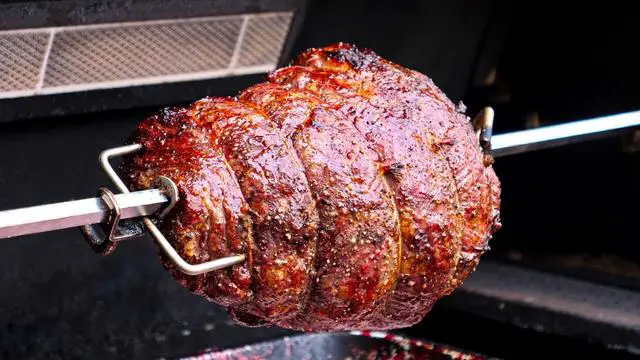Taro has a mildly sweet and nutty flavor, similar to a blend of potatoes and chestnuts. Its texture is starchy and smooth.
Taro is a versatile root vegetable popular in many cuisines worldwide. Originating in Southeast Asia, it is a staple in dishes ranging from savory to sweet. Taro can be boiled, steamed, or fried, making it a flexible ingredient in various recipes.
Its unique taste and texture add depth to soups, stews, and desserts. Rich in fiber and nutrients, taro is a healthy addition to any diet. People often compare its flavor to a combination of potatoes and chestnuts. Whether mashed, sliced, or pureed, taro offers a delightful culinary experience.
Introduction To Taro
Taro is a versatile root vegetable with a unique taste. It is a staple in many cultures worldwide.
A Brief History
Taro has been cultivated for over 10,000 years. Originating in Southeast Asia, it spread to Africa, the Pacific Islands, and the Caribbean.
Ancient Egyptians used taro for medicinal purposes. They believed it had healing properties. In India, taro leaves are used in traditional dishes.
Global Popularity
Taro is popular in various cuisines. In Hawaii, taro is used to make poi, a traditional dish. In Japan, it is called “satoimo” and used in soups.
In the Caribbean, taro is known as “dasheen.” It is often boiled or fried. In Africa, taro is a key ingredient in many stews.
| Region | Common Use |
|---|---|
| Hawaii | Poi |
| Japan | Soups |
| Caribbean | Boiled or Fried |
| Africa | Stews |
Taro’s global popularity is due to its unique flavor and versatility. Its taste is often described as sweet and nutty.
In summary, taro has a rich history and widespread appeal. It continues to be a beloved ingredient in many kitchens worldwide.
Taro’s Nutritional Profile
Taro is a root vegetable that is packed with essential nutrients. It is known for its unique taste and health benefits. Let’s delve into what makes taro a nutritious choice for your diet.
Key Nutrients
Taro is rich in several key nutrients that are vital for good health. Below is a table that outlines the primary nutrients found in taro:
| Nutrient | Amount per 100g |
|---|---|
| Calories | 112 kcal |
| Carbohydrates | 26.46 g |
| Dietary Fiber | 4.1 g |
| Protein | 1.5 g |
| Fat | 0.2 g |
| Vitamin C | 5.0 mg |
| Potassium | 591 mg |
| Calcium | 43 mg |
Health Benefits
Taro offers numerous health benefits due to its rich nutritional profile:
- High in Fiber: Taro is high in dietary fiber, promoting digestive health.
- Rich in Antioxidants: Taro contains antioxidants that help fight free radicals.
- Good for Heart Health: The potassium in taro supports heart health and blood pressure regulation.
- Boosts Immune System: The vitamin C content helps strengthen the immune system.
- Energy Source: Its carbohydrate content provides a good source of energy.
Incorporating taro into your diet can provide these valuable nutrients and health benefits. This makes it a great addition to a balanced diet.
Taro’s Unique Flavor
Taro, a starchy root vegetable, offers a distinct taste. It’s a staple in many Asian and Pacific cuisines. Understanding its unique flavor can enhance your culinary adventures.
First Impressions
The first bite of taro is often surprising. The texture is starchy and slightly creamy. It’s similar to a blend of potatoes and sweet potatoes. Raw taro has a mild, nutty taste. Cooking enhances its subtle sweetness.
Flavor Notes
Taro’s flavor profile is complex. It’s both sweet and nutty. The root has earthy undertones. This makes it versatile for both savory and sweet dishes. When cooked, taro becomes creamy and tender.
In savory dishes, taro absorbs flavors well. It pairs beautifully with spices and herbs. In desserts, taro’s natural sweetness shines. It adds a unique depth of flavor to puddings and cakes.
Here’s a quick overview:
- Texture: Starchy, creamy when cooked
- Raw Taste: Mild, nutty
- Cooked Taste: Sweet, earthy, with nutty undertones
Understanding taro’s unique flavor can elevate your dishes. Whether in soups, stews, or desserts, taro adds a delightful twist.
Comparing Taro To Other Roots
Taro is a unique root vegetable with a distinctive taste. Let’s compare it to other popular roots to understand its flavor better.
Taro Vs. Potato
Potatoes are a staple in many diets. They have a mild, earthy taste. Taro, on the other hand, is starchy and slightly sweet.
| Characteristic | Potato | Taro |
|---|---|---|
| Taste | Mild, earthy | Starchy, slightly sweet |
| Texture | Soft, fluffy | Firm, creamy |
| Uses | Fries, mashed, baked | Stews, soups, desserts |
Taro Vs. Sweet Potato
Sweet potatoes are known for their sugary taste. They are often orange in color. Taro has a more subtle flavor and a white or purple hue.
- Sweetness: Sweet potatoes are very sweet, while taro is mildly sweet.
- Color: Sweet potatoes are usually orange, taro can be white or purple.
- Texture: Sweet potatoes are soft, taro is more firm and creamy.
In summary, taro offers a unique taste experience. It’s starchy and slightly sweet, setting it apart from potatoes and sweet potatoes.
Culinary Uses Of Taro
Taro is a versatile root vegetable with a unique taste. It is used in many cuisines around the world. This starchy tuber can be sweet or savory. Let’s explore some exciting culinary uses of taro.
Traditional Dishes
Taro has been a staple in many traditional dishes. In Hawaii, taro is mashed to make poi. It is a thick, purple paste eaten with fingers. In China, taro is used in taro cakes for festivals. They are steamed or fried for a crispy treat.
- Poi – A Hawaiian dish made by mashing taro.
- Taro Cakes – Chinese New Year delicacy, steamed or fried.
- Satoimo – Japanese simmered taro, served with soy sauce.
Modern Recipes
Modern chefs have found new ways to use taro. It can be turned into chips or added to desserts. Taro bubble tea is a popular drink with a unique flavor. You can also make taro fries, which are a healthy alternative to potato fries.
- Taro Chips – Sliced thin and fried for a crispy snack.
- Taro Bubble Tea – A sweet drink with taro flavor and tapioca pearls.
- Taro Fries – Baked or fried, seasoned with spices.
Here is a quick recipe for taro fries:
Ingredients:
- 2 taro roots
- Olive oil
- Salt
- Pepper
Instructions:
1. Peel and slice taro into sticks.
2. Toss with olive oil, salt, and pepper.
3. Bake at 400°F for 20 minutes or until crispy.
Cooking Methods For Taro
Taro is a versatile root vegetable that can be cooked in many ways. Each method brings out unique flavors and textures. Let’s explore how to boil, bake, and fry taro.
Boiling
Boiling is a common method to cook taro. It helps soften the root and make it tender.
- First, peel the taro and cut it into cubes.
- Next, place the cubes in a pot of water.
- Bring the water to a boil over medium heat.
- Cook for about 15-20 minutes until taro is soft.
- Drain the water and serve the taro as a side dish.
Boiled taro has a mild, nutty flavor. It’s perfect for soups and stews.
Baking
Baking taro is a great way to enhance its natural sweetness. This method also gives it a crispy texture.
- Preheat your oven to 375°F (190°C).
- Peel the taro and slice it into thin pieces.
- Spread the slices on a baking sheet.
- Drizzle with olive oil and sprinkle with salt.
- Bake for 25-30 minutes until golden brown.
Baked taro makes a delicious snack or side dish. It’s similar to potato chips but healthier.
Frying
Frying taro gives it a crispy outside and a soft inside. This method is quick and easy.
| Step | Description |
|---|---|
| 1 | Peel the taro and cut it into thin strips. |
| 2 | Heat oil in a frying pan over medium-high heat. |
| 3 | Add the taro strips to the hot oil. |
| 4 | Fry until they are golden and crispy. |
| 5 | Remove and drain excess oil on a paper towel. |
Fried taro is a tasty treat. It’s crunchy and pairs well with dips.
Taro In Beverages
Taro, a unique root vegetable, has made its way into various beverages. Its distinct flavor profile adds a creamy, sweet touch to drinks. Let’s explore how taro enhances popular beverages.
Taro Milk Tea
Taro milk tea is a favorite in bubble tea shops. This drink combines taro with milk and tea, creating a delightful blend. The result is a creamy, slightly sweet drink with a nutty undertone.
The purple color of taro milk tea makes it visually appealing. Kids and adults love its unique taste and appearance. The texture is smooth, making it a comforting drink.
To make taro milk tea at home, you need taro powder or fresh taro. Combine it with milk, tea, and sugar. Blend it well and serve with ice. You can also add tapioca pearls for extra fun.
Taro Smoothies
Taro smoothies are another delicious way to enjoy this root vegetable. They are thick, creamy, and packed with flavor. The natural sweetness of taro makes it a perfect ingredient for smoothies.
To prepare a taro smoothie, you need taro, milk, and a sweetener. You can also add fruits like bananas or berries for extra flavor. Blend all ingredients until smooth and serve chilled.
These smoothies are not only tasty but also nutritious. Taro is rich in vitamins and minerals, making it a healthy choice. Kids will love the fun purple color and the sweet taste.
Here is a simple recipe for a taro smoothie:
Ingredients: - 1 cup cooked taro or 2 tbsp taro powder - 1 cup milk or milk alternative - 1 banana (optional) - 1 tbsp honey or sweetener of choice - Ice cubes Instructions: 1. Add all ingredients to a blender. 2. Blend until smooth. 3. Pour into a glass and enjoy!
Enjoy these taro-based beverages for a refreshing and unique experience. Their unique flavor and health benefits make them a great addition to your drink repertoire.
Exploring Taro Varieties
Taro is a versatile root vegetable. It comes in various shapes and sizes. The taste can vary based on the type and region. Let’s delve into the different taro varieties.
Common Types
There are several common types of taro. Each has unique characteristics and flavors.
- Dasheen: This is the most widely known taro. It has a mild, nutty flavor.
- Eddoe: Smaller and rounder, it has a stronger, earthier taste.
- Japanese Taro: Known for its purple hue, it is sweet and creamy.
Regional Differences
The taste of taro can change based on where it is grown. Different regions produce unique flavors and textures.
| Region | Flavor Profile |
|---|---|
| Hawaii | Sweet and starchy |
| China | Earthy and nutty |
| Japan | Creamy with a hint of sweetness |
| Caribbean | Rich and slightly peppery |
Tips For Selecting And Storing Taro
Choosing and storing taro properly ensures you enjoy its unique flavor. Follow these tips to select and store taro like a pro.
Choosing Fresh Taro
Fresh taro has a firm texture and smooth skin. Look for taro that feels heavy for its size. Avoid taro with soft spots or moldy areas.
- Check the skin: It should be free of blemishes.
- Feel the weight: Heavier taro indicates freshness.
- Avoid discoloration: Brown spots or mold are bad signs.
Proper Storage
Storing taro the right way keeps it fresh longer. Follow these steps for proper storage:
- Room temperature: Store taro in a cool, dry place.
- Avoid moisture: Keep taro away from humidity.
- Separate storage: Store taro separately from other vegetables.
For longer storage, consider refrigeration. Wrap taro in paper towels and place it in a plastic bag. Store in the crisper drawer of your fridge. This method keeps taro fresh for up to two weeks.
| Storage Method | Duration |
|---|---|
| Room Temperature | 1 week |
| Refrigeration | 2 weeks |
Frequently Asked Questions
What Does Taro Taste Like?
Taro has a mildly sweet and nutty flavor. Its texture is starchy and similar to potatoes. It’s often compared to sweet potatoes.
Is Taro Sweet Or Savory?
Taro is naturally mildly sweet but can be used in both sweet and savory dishes. Its versatile flavor makes it adaptable.
Can Taro Be Eaten Raw?
No, taro should not be eaten raw. Raw taro contains calcium oxalate, which can cause irritation. Always cook it before consuming.
How Do You Cook Taro?
You can boil, steam, or roast taro. It’s also used in soups and desserts. Cooking reduces its natural bitterness.
Conclusion
Taro offers a unique blend of sweetness and earthiness. Its nutty flavor pairs well with various dishes. Whether boiled, baked, or fried, taro provides a delightful culinary experience. If you’re adventurous with food, give taro a try. It’s a versatile ingredient that can enhance your meals.
Learn More About Grilling
If you want to learn more about grilling, check out these other helpful resources!











